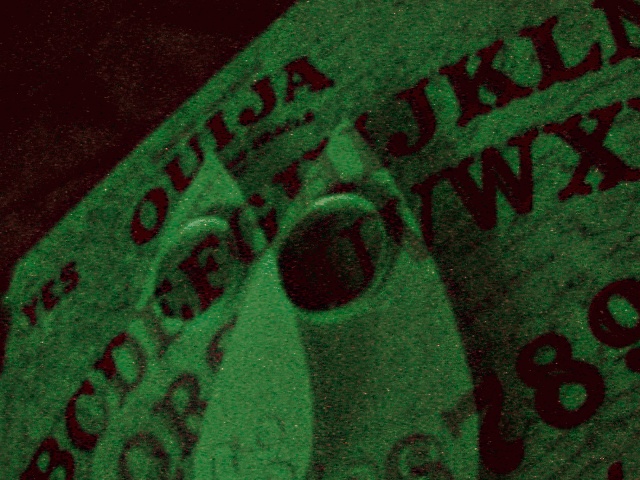Tara Lemma
Mick, fresh out of his apprenticeship, has been doing excellent work. He already has a few regular clients, who love him for his bold linework and experimentation with the pin-up tradition. In the past few weeks, Mick has tattooed a house with arms and legs and eyelashes, posing pin-up style, a pin-up girl scattered in pieces like a paper doll, a pin-up girl with a hand where her head should be. The rest of us are a little jealous. We’re still tattooing a lot of ships and jaguars—standard fare. Today Mick has an appointment with a young girl, one who has never been tattooed. He draws a design for her, a pin-up girl with many arms and legs sprouting out from unexpected places. He scales the design to the size of her calf, prints it on outline paper, pulling away the top layer and sticking the lower layer, the layer with the ink, directly to her skin. He rubs until it sticks and pulls it away.
“It’s perfect,” she says, inspecting it in the mirror. She still looks a little nervous.
“You’re going to do great,” Mick says, before laying her down, removing a bit of stubble with a razor, and rubbing her calf with green soap. He explains what he is going to do with the bedside manner of an established doctor. Our clients look on, also jealous. Mick tattoos for a few hours and his client holds up well. When he is finished, he pulls back to take a look from afar. The tattoo is not a pin-up girl, but rather, a crying baby. Its head is big and tilted back, eyes clamped shut, tears peppering its cheeks, mouth open, revealing one lone tooth. It is wearing a diaper and its knees are dimpled and it is disgusting. Mick covers his mouth.
“Can I take a look?” the girl asks, swinging her legs off the table and walking to the mirror. She sees what Mick has done and cries. “What is wrong with you? What is wrong with you?” she asks. We ask, too. Mick apologizes profusely. He says this is not what he applied, not what he tattooed. He has no explanation. He is fired.
The next day, Aaronsen tattoos a crying baby on a man who’d asked for a tattoo of his recently deceased cat. The man runs crying out of the shop without paying. Aaronsen is asked what kind of game he is playing, and he swears he has no game, has no idea what happened. He is fired. After a while, many of us have tattooed crying babies, and soon after that, it is all we can tattoo. We take apart our equipment and get MRIs, but everything is normal. Our shop is not doing so well lately, our practice of tattooing only crying babies having made it into a few strongly-worded reviews, and so we all go home and get some sleep. We call our mothers and are told that we’re right to do this. All we need is a good night’s sleep.
At night, we dream of crying babies. They aren’t stress dreams about accidentally tattooing crying babies and apologizing to angry customers; rather, our dreams almost seem appreciative of crying babies. Our dream eyes linger on their outie belly buttons, the little curl of hair sprouting from each crying baby’s head. We listen to them cry and appreciate the changes in tone and pitch, as we would music.
In case you were wondering, we don’t do drugs. People who don’t go to tattoo shops think tattoo artists are always doing drugs. People who do go to tattoo shops know that most of us used to always do drugs, and have since made a point to stop always doing drugs. This is an important distinction.
In the morning, we don’t have any appointments but don’t think it’s good for us to stay in the house all day. We get dressed and go out to walk our dog or get a cup of coffee. As we open the door to our respective apartments, our neighbor’s door opens at the same time, and a crying baby steps out, the height of an adult, wearing a nicely pressed suit. The suit was not made for a giant crying baby, and so the sleeves hang down over its hands and the pant legs drag on the ground. The crying baby cries a typical, “Waaah,” as it locks the door behind it. It gets into a car, pulls out of the driveway, and disappears from sight.
The crying babies must have been going to work, we all agree over brunch. We wonder what happened to our previous neighbors. We wonder how the crying babies can get and keep jobs with all that crying, but then we realize that we, with our dry eyes and our complex reasoning, must not be running things anymore.
At home, we watch TV and try to forget about things. Crying babies are on every channel. We watch them sit in talk-show chairs opposite each other and cry intermittently, their eyes never open beyond a watery squint. The audience, also crying babies, applaud with their chubby little fingers. We watch them cry and gesticulate to each other in kitchens, and the laugh track is helpful, because we don’t know when to laugh anymore. We watch them make out in Cabo and then we turn off our TVs. That content feels off-limits for us, though the more we think about it, we are not sure if the content shouldn’t exist. If both parties are babies, is it wrong that they fall in love? Is it wrong for them to share a romantic dinner of fresh fish under the stars? It will further develop their palates, after all. Regardless, we know we shouldn’t watch. The TV stays off.
We occupy ourselves with tasks we’ve put off, like cleaning the bathroom. When we open the cabinet underneath the kitchen sink in search of cleaning products, we find the space stuffed with crying babies. The noise is overwhelming. We shut the cabinet. Complete silence. We open it again. Very loud crying. We did not realize our cabinets were so well insulated. One of the crying babies sticks out its hand and offers us the cleaning products. We tentatively take them, shut the cabinet, and get to work. Some of us already have clean bathrooms and focus instead on organizing the basement or the garage. Both spaces are full of crying babies, row after row of them, neatly packed into crevices and stacked to the ceilings. Their presence distracts from the messiness of our basements and garages. Those spaces are entirely other now. It is no longer of any concern that the tools are strewn in a pile next to a box of Christmas lights.
Those of us in need of food go to the local grocery store. We like to support local businesses. We are happy to see the same adult family running the place. They smile at us, but the smiles are fearful, and we know it’s not just us. We wander the aisles, picking up eggs and milk and bread, our inclement weather instincts kicking in because we have no precedent for this type of event. We know eggs and milk and bread aren’t the most helpful foods to have in the case of an actual emergency, but the familiarity of the action comforts us. Outside, the sun begins to set. Cars pull into the parking lot; the work day is over. One by one, car doors open and slam shut. Crying babies, in suits, in scrubs, some still in diapers, file into the grocery store. We cover our ears and drop whatever we’d been holding to protect ourselves from the terrible cacophony. We try to get to the door, but the stream of crying babies keeps coming, and we realize they are bigger than us, over six feet tall with heads the size of truck tires. Starting in the dairy aisle, they work from right to left, filling in each aisle, standing as though waiting in line. More crying babies approach on foot. They keep coming, until the store is so full of crying babies that everyone inside is mashed against shelves, freezer doors, the glass of the large front window. Those of us by the window can see that the hardware store across the street is the same. We make eye contact with the patrons pressed against the glass there. Their mouths are flattened and spread open against the glass, like algae fish, and then we realize that ours are too, that the store has gotten even more crowded. A man nearby manages to pry his face from the glass and push back against the pressure of the crying babies behind him, just long enough to shout, “What do you want?” In their cries, we find an answer. They want food, water, space. We feel compassion; they cannot help that there is so many of them. They didn’t ask to be born.
As we are pressed tighter and tighter against each other, it becomes harder to differentiate between our bodies and theirs. Soon, in unison, we cry.
Tara Lemma is a Fiction MFA candidate and First-Year Writing Instructor at Temple University. She also works as an Assistant Fiction Editor at Barrelhouse Magazine. Her work has been featured in or is forthcoming from Lockjaw Magazine, The Disappointed Housewife, Longleaf Review, Paper Darts, and Maudlin House. She tweets at @ilovetaralemma. She thanks you for reading!


